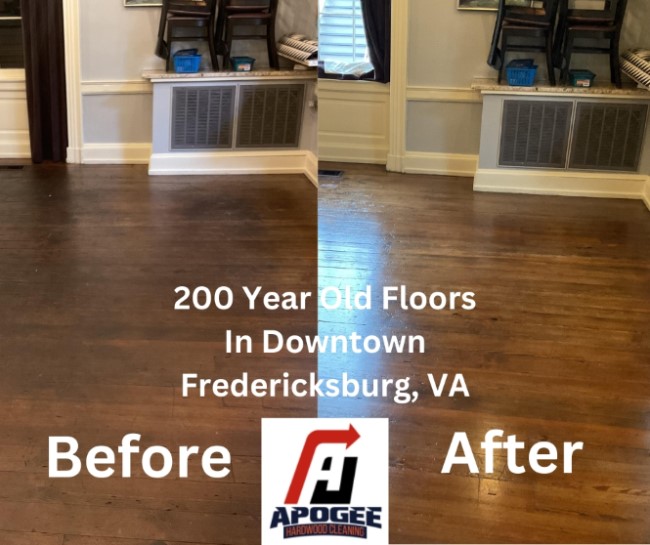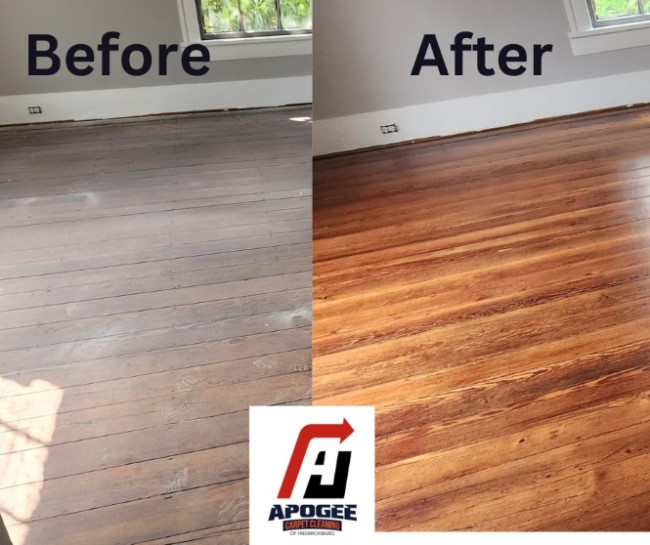Screen and Recoat: A Minimalist Approach to Preserving Antique Wood Flooring
Antique wood flooring, with its rich history and timeless beauty, is a prized feature in many homes. However, preserving these floors in their original glory can be a challenge. Enter the minimalist yet effective technique of screen and recoat – a method that delicately revitalizes wood floors without stripping away their historical essence. In this blog, we’ll explore how this approach offers a perfect balance between preservation and practical care.
The Philosophy Behind Screen and Recoat

Screen and recoat is a process that gently refreshes the top layer of wood flooring. It’s about doing just enough to revive the wood’s beauty without overdoing it. This approach aligns well with the minimalist philosophy of ‘less is more’, focusing on the preservation of the wood’s original character and patina.
Understanding the Process
Screening, or buffing, is the first step. It involves lightly sanding the floor’s surface to remove the old finish. This step is crucial as it preps the floor for the new coat of finish without delving into the deeper layers of the wood.
Recoating follows, where a new layer of finish is applied. This layer acts as a protector, shielding the wood from everyday wear and tear while restoring its shine and color.
Why Choose Screen and Recoat for Antique Floors?
1. Preserves Historical Integrity
For antique floors, preservation is key. Screen and recoat maintains the original wood, ensuring that the floor’s historical value isn’t diminished by aggressive restoration techniques.
2. Less Invasive, More Sustainable

This method is environmentally friendly. It requires less material and produces less waste compared to a full-scale refinishing project.
3. Cost-Effective and Time-Saving
Screen and recoat is more economical than complete refinishing. It’s also faster, causing minimal disruption to your daily routine.
4. Enhances Natural Beauty
The process revitalizes the floor’s appearance, accentuating its natural grain and texture, which is often a hallmark of antique wood.
When to Opt for Screen and Recoat?
Timing is crucial. If your floor shows signs of surface wear but the wood underneath is in good condition, screen and recoat is ideal. However, if there are deep scratches, warps, or structural issues, more extensive repairs might be necessary.
Tips for Successful Screen and Recoat
1. Choose the Right Finish
Select a finish that complements the age and style of the wood. Traditional finishes like oil-based varnishes can enhance the antique look, while water-based finishes offer a more contemporary feel.
2. Proper Preparation
Ensure the floor is clean and free from any wax or oil residue. Any such remnants can prevent the new finish from adhering properly.
3. Professional Touch
While screen and recoat can be a DIY project, consulting a professional with experience in antique wood can yield the best results. They can assess the specific needs of your flooring and choose the most suitable products and techniques.
Screen and recoat stands out as a minimalist, yet highly effective method for preserving and enhancing antique wood flooring. It respects the wood’s past, protects its present, and prepares it for the future. By choosing this approach, homeowners can ensure their antique floors continue to tell their stories for many years to come, adding both history and beauty to their homes.
